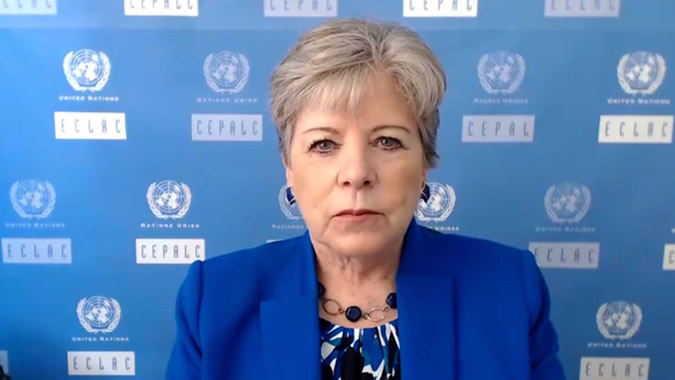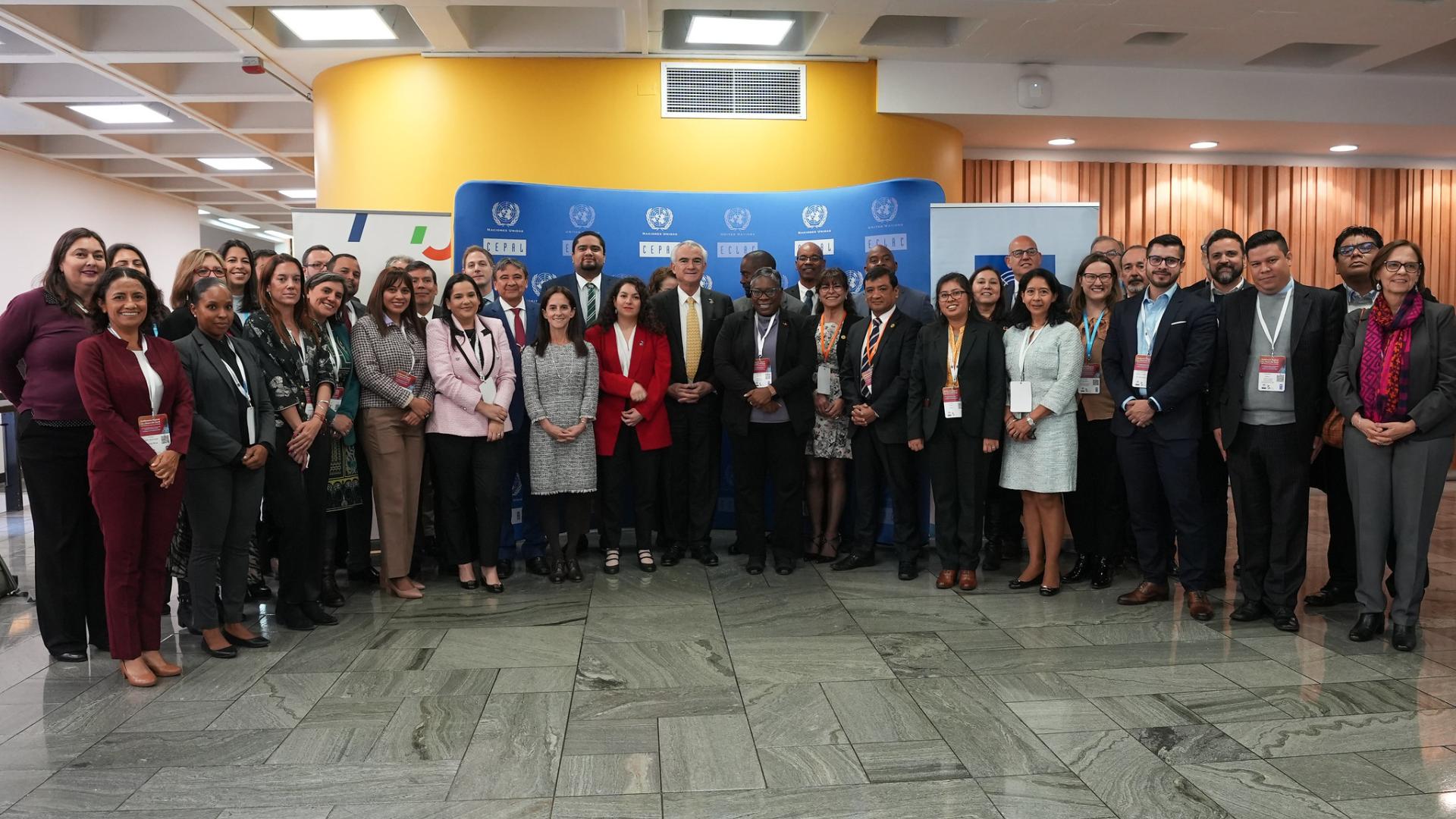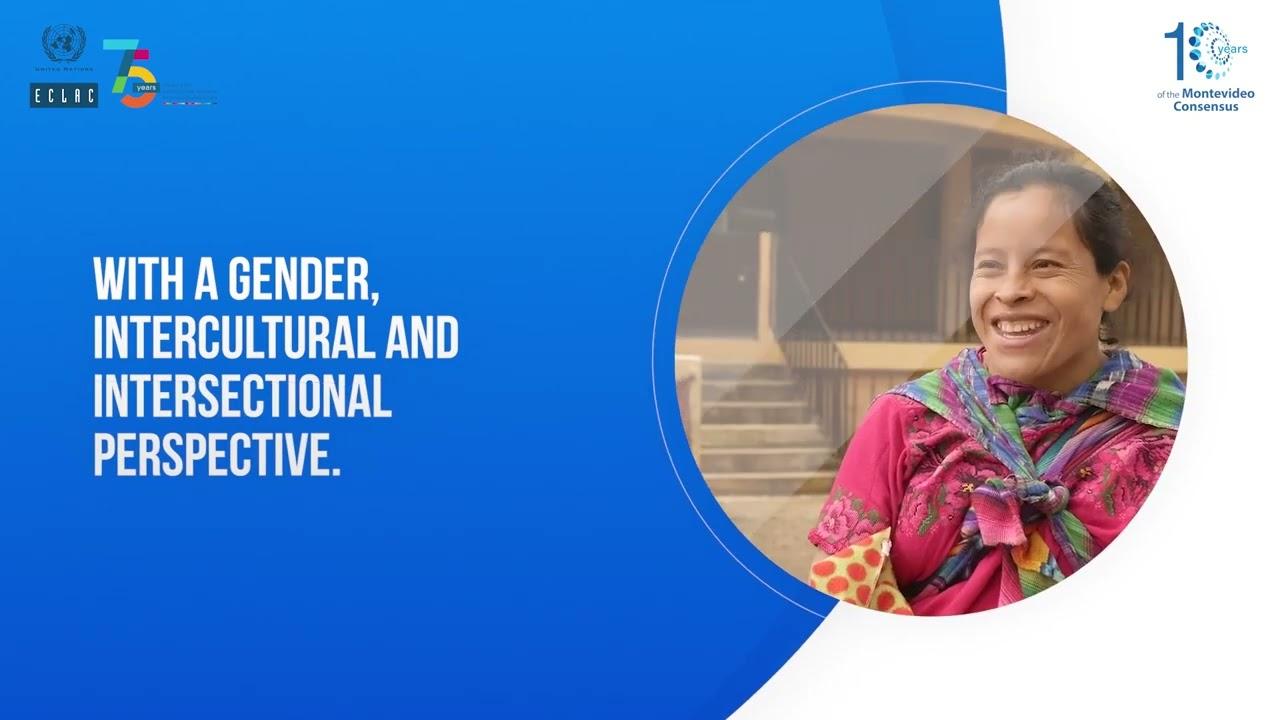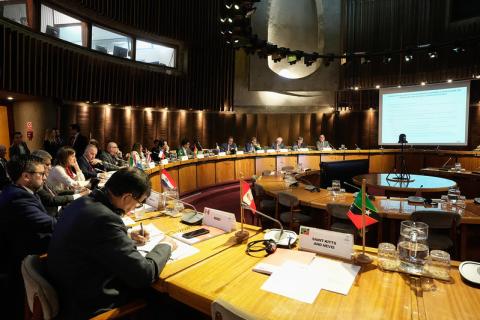Briefing note
The Comprehensive Development Plan for northern Central America and Mexico is the key to addressing the structural causes of migration because it seeks to create a space for sustainable development by stimulating economic growth, promoting universal access to social rights, fostering resilience to climate change and guaranteeing rights throughout the migratory cycle, Alicia Bárcena, Executive Secretary of the Economic Commission for Latin America and the Caribbean (ECLAC), indicated today.
The senior United Nations official participated in a high-level event entitled “The Global Compact on Refugees and forced displacement in Central America: Regional cooperation and the MIRPS as a solution,” organized by the governments of Spain and El Salvador in the framework of the 75th United Nations General Assembly.
In addition to Alicia Bárcena, the speakers included Fillippo Grandi, United Nations High Commissioner for Refugees; Arancha González Laya, Minister of Foreign Affairs, EU and Cooperation of Spain; Alexandra Hill Tinoco, Minister of Foreign Affairs of El Salvador; Marco Mendicino, Minister of Immigration, Refugees and Citizenship of Canada; and Luis Almagro, Secretary General of the OAS.
In her remarks, ECLAC’s highest authority stressed that the pandemic prompted by the coronavirus (COVID-19) found the region in a very complex socioeconomic context, with structural gaps of inequality, low productivity, and fragmentation in social protection and health care.
“In this context of economic and social vulnerability, the human cost of the health crisis has already been immense. Its socioeconomic impact will be equally severe,” she warned.
Bárcena specified that ECLAC estimates a -9.1% contraction in regional GDP in 2020 and a 5.4 percentage point increase in unemployment to reach 13.5%. The number of people living in poverty will rise by 45.4 million in 2020, meaning that the total number of people in this situation is seen swelling from 185.5 million in 2019 to 231 million in 2020 – a figure that represents 37.3% of the population of Latin America and the Caribbean. More than 2.7 million formal businesses (2.6 million of which are microenterprises) will be forced to close, leaving 8 million more people without formal employment.
In the case of Central America and the Dominican Republic, GDP is forecast to fall -5.7%. Five of the subregion’s eight countries are seen with poverty rates surpassing 40%, and only Panama, Costa Rica and the Dominican Republic will have rates around 20%.
Alicia Bárcena recalled that in 2018, more than 196,000 people were returned to the countries of northern Central America, and she emphasized that volatility with regard to remittances is worrisome in a region that receives around $32 billion dollars in such funds.
She also noted that in the macroeconomic arena, Central American countries and the Dominican Republic have implemented diverse fiscal and monetary policies, actions and incentives that amount to 5% of GDP, on average.
“However, these countries face reduced fiscal space and debt service payments that far exceed what they are able to invest in health, for example. That is why I am urgently calling on the international community to consider debt relief on Central American countries’ interest payments, which amounts to 2.7% of GDP, at least through 2021. The subregion’s countries require urgent support from the international community, even though they are considered to be middle income,” she sustained.
ECLAC’s Executive Secretary highlighted that the Comprehensive Development Plan – which involves 20 United Nations agencies, funds and programs that operate in Latin America and the Caribbean – seeks to change the migration narrative, placing the dignity of migrants and human rights at the center with a human security approach and adopting a focus on the entire migratory cycle: origin, transit, destination and return.
She added that the plan explores regional synergies and integration-based approaches, it surveys and expands what States already do well with their resources, and it strengthens public capacities.
The proposal is organized around four thematic pillars: economic development, social well-being, environmental sustainability, and comprehensive management of the migratory cycle.
She stated that the initiative contemplates 22 thematic programs and 114 projects that are ready to be implemented, which entail an investment of $45 billion dollars over 5 years.
Finally, Alicia Bárcena urged Spain and Canada to carry out an international meeting, led by United Nations Secretary-General António Guterres, to publicize the Comprehensive Development Plan and attract investment and international cooperation to the subregion.



